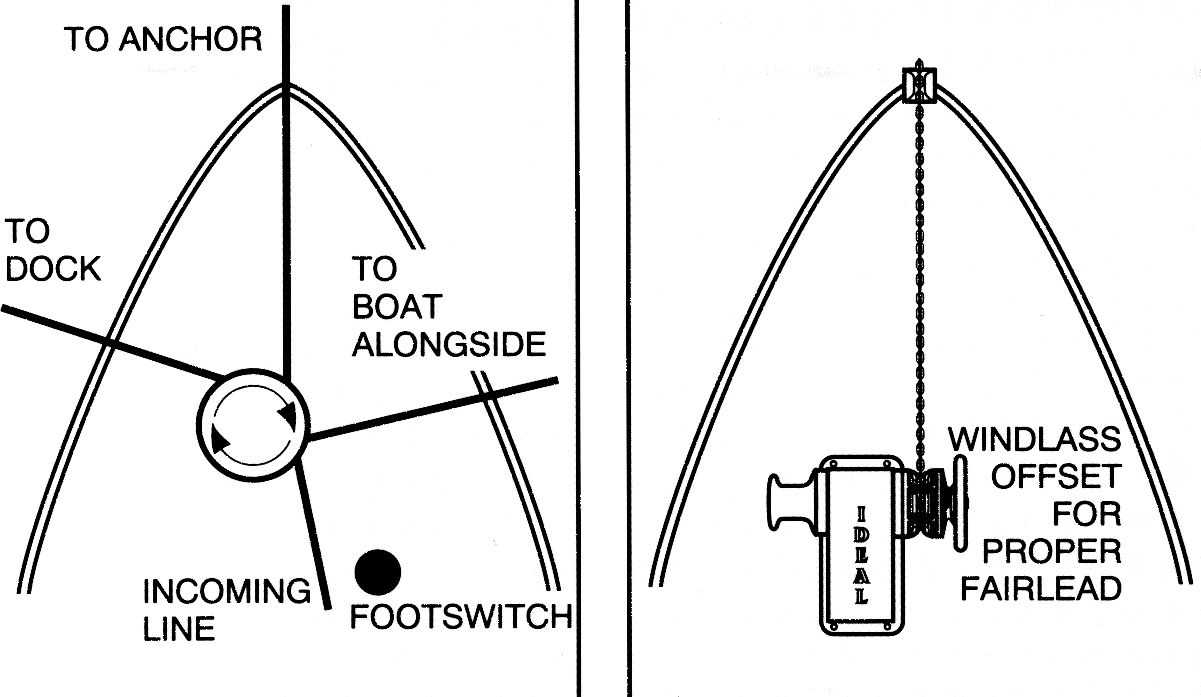Resources
Which Windlass?
CHOOSING A WINDLASS
STEP 1: GROUND TACKLE
If you do not understand anchoring and ground tackle, you will not be able to choose the proper windlass. Many books and article have been written on the subject of anchoring. We strongly advise every boat to become more knowledgeable as your vessel and your life might someday depend on it.
In our opinion there are only two types of safe anchor rodes, either all chain or line with a short length of chain attached to the anchor. Most well equipped vessels will carry one or two of each.
For more information, consult Chapman’s Piloting, Seamanship and Small Boat Handling, chapter six on “Anchoring”. The book is available everywhere and is invaluable.
STEP 2: HORIZONTAL VS. VERTICAL
The second step is to choose which type of configuration fits your needs. Basically there are two configurations: vertically mounted with the motor and gear box below deck and horizontally mounted with everything above deck. Each type has a few advantages and disadvantages.
The advantages of the vertically mounted windlasses is that they allow the anchor rode to come aboard at almost any angle (see drawing below), they take up considerably less deck space and the motor and gear box are below deck, protected from the weather.
The disadvantages are that they are harder and more costly to install and service. They also take up room below deck in the forepeak where space may be at a premium.
The advantages of the horizontally mounted windlasses are that they are offered in a wider range of gypsy variations, are easier to install and service and do not interfere with space in the forepeak.
The disadvantages are that the anchor rode must travel in a direct line from the bow roller to the windlass (see drawing below) often necessitating the windlass to be mounted off center which sometimes look out of place. They also take up considerably more deck space and totally exposed to the elements.

STEP 3: DO YOU NEED A WILDCAT?
Now that you have chosen the capacity and configuration, you need to decide whether your windlass will need a wildcat. A wildcat is a sprocket-like device that handles chain. Some people also refer to it as a chain gypsy. If you plan to use more than a few feet of chain or plan to add chain in the future, a wildcat is a necessity. Most vessels that intend to do more than daytime anchoring will need a windlass with a wildcat.
For small boats using short lengths of chain up to about a fathom, Ideal offers a urethane capstan size 1 or 2 designed to accept chain in the same manner as line. They grip the chain sufficiently while not becoming scarred. They are available on Size 1 windlasses only.
MODEL NUMBERS
Our windlass model numbers consist of three characters, the key to which is the following:
H or V: Horizontal or Vertical
1-11: Series size 1 through 11
A-S: Configuration of parts. A-one capstan only, B-one wildcat only, C-capstan and wildcat, D-two capstans, E-two wildcats, F-capstan port/wildcat stbd, G-wildcat port/capstan stbd, S-custom design.
The preceding has covered the basics of anchor windlasses. The more thought and study you give the system, the easier and safer your boating will be. If you have any additional questions please feel free to call us – we’ll be glad to help you.
Call 508-995-9511 or email our Windlass team at Ideal@SchaeferMarine.com
